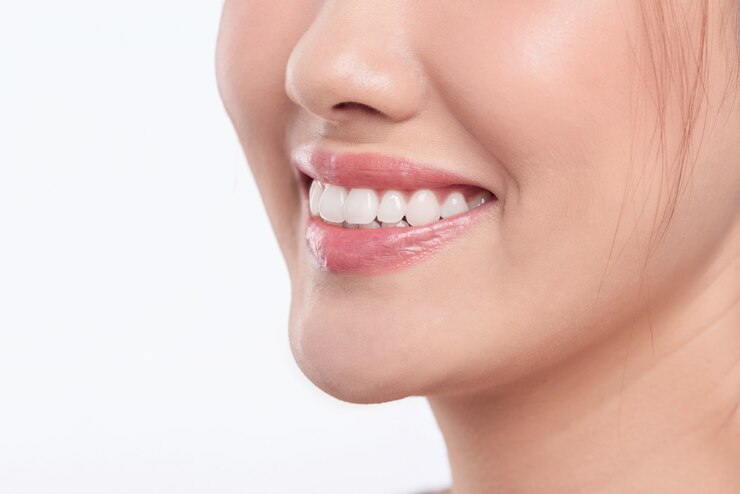A bright, white smile is often associated with beauty, confidence, and success. Over time, teeth can become stained due to factors such as diet, lifestyle, and aging. This has led to a surge in the popularity of teeth whitening, as people seek ways to restore the natural brightness of their smiles. Whether through professional treatments or at-home solutions, achieving a whiter smile has never been easier. Those searching for the best solutions often explore Teeth Whitening in Dubai for advanced options.
The Science Behind Teeth Whitening
Teeth whitening works by breaking down stains on the enamel and dentin layers of the teeth. Whitening agents, primarily hydrogen peroxide or carbamide peroxide, penetrate the tooth surface and lift deep stains, restoring a whiter appearance. This process does not damage the tooth structure when done correctly, making it a safe and effective cosmetic solution.
Common Causes of Tooth Discoloration
Understanding the causes of tooth discoloration can help in preventing stains and maintaining long-lasting whitening results. Here are some common reasons why teeth lose their brightness:
🟡 Food and Drinks: Coffee, tea, red wine, and certain fruits like berries contain pigments that stain the enamel over time.
🟡 Smoking and Tobacco Use: Nicotine and tar from cigarettes or tobacco cause yellowish and brownish discoloration.
🟡 Aging: As enamel wears down with age, the yellowish dentin layer beneath becomes more visible.
🟡 Medications: Certain antibiotics, antihistamines, and chemotherapy treatments can lead to intrinsic stains.
🟡 Poor Oral Hygiene: Inadequate brushing and flossing allow plaque buildup, which contributes to discoloration.
🟡 Genetics: Some individuals naturally have darker or thinner enamel, making their teeth appear less white.
Types of Teeth Whitening Methods
There are various whitening techniques available, each catering to different needs and preferences:
1. Professional In-Office Whitening
This is one of the most effective methods, offering immediate and long-lasting results. A high concentration of whitening gel is applied to the teeth, often activated by a special light or laser. The entire process is completed in a single session, leaving teeth multiple shades whiter.
2. At-Home Whitening Kits
At-home kits include whitening trays, strips, or gels that allow gradual whitening. Though not as potent as in-office treatments, they provide noticeable improvements over time.
3. Whitening Toothpaste and Mouthwashes
Whitening toothpaste contains mild abrasives and chemicals that help remove surface stains. While they do not deeply whiten teeth, they are great for maintaining results after professional treatments.
4. Natural Remedies
Some prefer natural alternatives like baking soda, activated charcoal, and hydrogen peroxide rinses. While these may offer mild whitening effects, they should be used cautiously to prevent enamel damage.
Benefits of Teeth Whitening
Teeth whitening provides more than just aesthetic advantages. Here are some key benefits:
🟡 Enhanced Confidence: A whiter smile boosts self-esteem and makes social interactions more enjoyable.
🟡 Youthful Appearance: White teeth are often associated with youth and vitality.
🟡 Better First Impressions: A bright smile creates a positive first impression, whether in professional or personal settings.
🟡 Encourages Better Oral Hygiene: Those who invest in teeth whitening are more likely to maintain good oral hygiene habits.
🟡 Non-Invasive Procedure: Whitening is a safe and painless way to improve the appearance of teeth without requiring dental procedures like veneers or crowns.
How to Maintain Whitened Teeth
To prolong the results of teeth whitening, follow these essential tips:
🟡 Avoid Staining Foods and Drinks: Minimize the intake of coffee, red wine, and dark-colored foods.
🟡 Quit Smoking: Avoid tobacco products to prevent re-staining of teeth.
🟡 Maintain Proper Oral Hygiene: Brush twice a day, floss daily, and use whitening toothpaste.
🟡 Stay Hydrated: Drinking plenty of water helps wash away food particles and bacteria that can cause staining.
🟡 Use a Straw: When drinking colored beverages, use a straw to minimize contact with teeth.
🟡 Regular Dental Checkups: Visit a dentist regularly for professional cleanings and touch-up whitening treatments.
Myths and Facts About Teeth Whitening
There are many misconceptions surrounding teeth whitening. Here are some myths debunked:
🟡 Myth: Whitening damages enamel. Fact: When used correctly, whitening products do not harm enamel but simply remove stains.
🟡 Myth: Whitening results last forever. Fact: Results can last for months, but lifestyle choices affect longevity.
🟡 Myth: All teeth can be whitened equally. Fact: Some stains, like those from medications or genetics, may not respond well to whitening treatments.
🟡 Myth: Whitening makes teeth sensitive permanently. Fact: Temporary sensitivity may occur but usually fades within a few days.
Conclusion
Teeth whitening is a simple yet powerful way to enhance your smile and confidence. With various options available, from professional treatments to at-home remedies, achieving a brighter smile is within reach. By understanding the causes of discoloration, choosing the right method, and maintaining good oral habits, you can enjoy long-lasting whitening results. A radiant smile not only improves aesthetics but also contributes to a positive self-image and overall well-being.





Comments